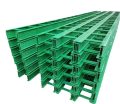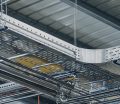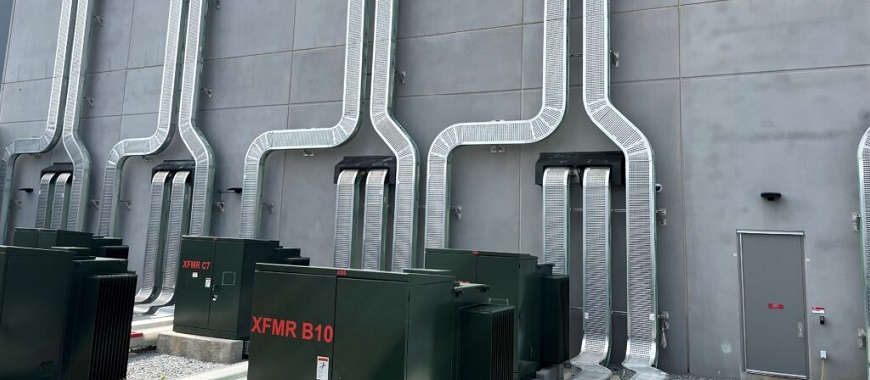
Plastic insert plate for cable tray provides smooth cable protection. Fits ladders/trays, available bottom-only or with sides. An insert plate for cable tray is a critical component used in cable management systems to enhance the functionality and safety of cable trays. These plates are designed to cover the gaps between tray sections, providing additional support and ensuring that cables stay securely in place. The insert plate for cable tray serves multiple purposes, including offering structural integrity to the tray, protecting cables from environmental factors, and preventing cables from slipping or becoming tangled. It also helps in distributing the load more evenly across the tray, ensuring that the weight of the cables does not cause damage to the system. By using insert plates, the cable tray system becomes more reliable and efficient, particularly in industrial and commercial environments where cable management is essential for safety and performance.
A Complete Guide to Insert Plate for Cable Tray Systems
An insert plate for cable tray plays a crucial role in modern cable management systems. It is used to cover the openings of cable trays, providing a secure and protective enclosure for cables running within the trays. The insert plate for cable tray is essential for ensuring the organization of wiring systems, preventing damage, and maintaining a clean and safe environment. In this article, we will explore the various functions of the insert plate for cable tray, the materials used in its construction, and the advantages it offers in different applications.
The Key to Durable and Long-Lasting Insert Plates for Cable Tray
For an insert plate to provide long-term protection, it must be made from durable, high-quality materials like fiberglass, which offers excellent resistance to corrosion, wear, and harsh environments. At GangLong Fiberglass, our insert plates are engineered with precision to ensure structural integrity and long-lasting performance. A well-designed insert plate not only enhances cable safety and organization but also extends the life of the entire cable management system.
The Materials Used for Insert Plates for Cable Tray
Plastic Insert Plates
Plastic insert plates are a popular choice due to their low cost, light weight, and easy installation. Among them, black plastic versions are especially favored for their clean appearance and ability to conceal wiring. Made from durable, impact-resistant plastics, they offer good resistance to moisture and chemicals. Their non-conductive nature also enhances safety, making them ideal for general-purpose or light-duty cable tray application in commercial and moderately harsh environments.
Metal Insert Plates
Metal insert plates, commonly made from galvanized steel or aluminum, are ideal for heavy-duty applications. They offer excellent strength, impact resistance, and load-bearing capacity. These plates are well-suited for industrial environments with high mechanical stress but may require coatings or maintenance in corrosive or humid conditions to prevent rust and ensure long-term durability.
Fiberglass Insert Plates
Fiberglass insert plates combine strength, corrosion resistance, and temperature tolerance. Lightweight and non-conductive, they perform well in demanding environments such as chemical plants or offshore facilities. At GangLong Fiberglass, our plates are engineered for durability, making them ideal for installations that require long-term stability, safety, and minimal maintenance in extreme operating conditions.
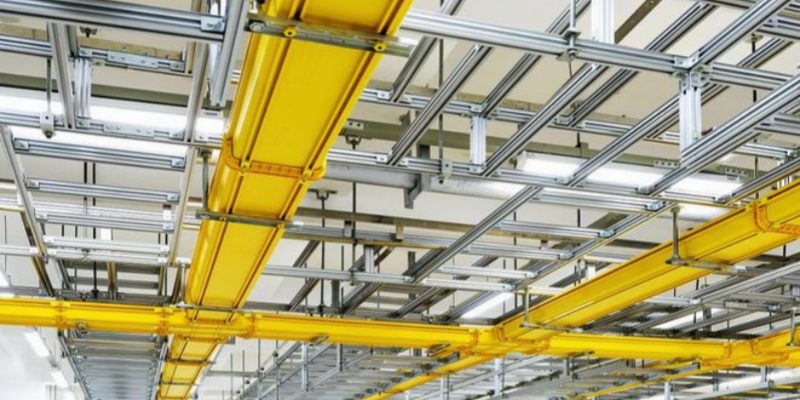
Cable Tray and Conduit: Choosing the Best Option
The Key Benefits of Insert Plate for Cable Tray
Insert plate for cable tray are a critical accessory in cable tray systems, offering a wide range of advantages across industrial, commercial, and technical environments. These benefits fall into several distinct categories, each contributing to the overall performance, safety, and aesthetics of the cable infrastructure.
Enhanced Cable Protection
One of the most important functions of an insert plate is to shield cables from contaminants such as dust, debris, and foreign objects. This is particularly crucial in sensitive environments like data centers, laboratories, clean rooms, and manufacturing plants, where any contamination could compromise the performance or integrity of the electrical systems. By sealing the top or sides of the cable tray, insert plates act as a barrier that preserves the condition of the cabling, helps prevent premature wear, and supports long-term system reliability.
Improved Cable Organization and System Longevity
Insert plates also contribute significantly to cable organization. By helping to contain and guide cables within designated spaces, they prevent wires from becoming tangled, twisted, or overlapping. This structured approach to cable management reduces mechanical stress on the cables, minimizing the risk of damage due to bending or pressure. In the long term, this helps extend the life of the cabling and simplifies any future modifications or upgrades, as cables remain easily traceable and accessible.
Enhanced Workplace Safety
Safety is a major concern in any environment where cable trays are used. Open trays with exposed cables can present several hazards — they may become tripping risks, attract dust that could cause short circuits, or even allow accidental contact with live wires. Insert plates mitigate these risks by securely enclosing the cables, thereby reducing the potential for injury or equipment failure. This is especially important in high-traffic areas such as factory floors, utility tunnels, or under raised floors in office environments.
Aesthetic Improvements
In addition to functional advantages, insert plates also improve the overall appearance of a cable management system. Exposed cables can make even a well-designed space appear cluttered or unfinished. In environments where visual order matters — such as customer-facing areas, high-end commercial buildings, or modern office spaces — insert plates conceal the internal contents of cable trays, creating a cleaner and more professional look. This visual neatness can also make routine inspections and maintenance more efficient by presenting an organized system.
Regulatory and Compliance Support
Many industries are governed by strict safety, cleanliness, or technical compliance standards. Insert plates help facilities meet these requirements by supporting fire safety protocols, preventing contamination, and contributing to cable segregation practices that may be required in industries such as healthcare, telecommunications, or food processing. The use of insert plates can also make audits and inspections smoother by demonstrating adherence to best practices in infrastructure design.
Environmental Protection
Insert plates protect cables from harsh conditions such as moisture, heat, dust, and corrosive chemicals. Fiberglass insert plates offer superior resistance and insulation, making them ideal for demanding environments. Their non-conductive nature ensures cable integrity and safety. At GangLong Fiberglass, our insert plates are built for durability, helping industries like oil and gas or chemical processing maintain reliable, long-lasting cable systems in challenging operating conditions.
The Key of Choosing the Right Insert Plate for Cable Tray
Selecting the appropriate insert plate for cable tray system is essential to ensuring long-term cable protection, operational safety, and efficient performance. The decision involves careful evaluation of various factors, ranging from environmental conditions to mechanical demands and installation specifics.
Environmental Conditions
The surrounding environment plays a crucial role in material selection. In corrosive or moisture-prone environments—such as coastal facilities, wastewater treatment plants, or chemical processing sites—insert plates made from corrosion-resistant materials like fiberglass or galvanized metal offer the best protection. These materials are specifically engineered to withstand harsh conditions without degrading over time. In contrast, for dry, climate-controlled indoor environments, cost-effective options such as black plastic insert plates may provide sufficient durability and insulation.
Tray Compatibility and Fit
Proper fit is critical to the effectiveness of any insert plate. In an open cable tray system, an ill-fitting plate may leave gaps that allow contaminants or debris to enter the tray, potentially damaging cables or affecting performance. Insert plates must match the exact size, shape, and profile of the cable tray opening to ensure a secure, complete enclosure. This is particularly important in facilities where cleanliness, fire safety, or system integrity is regulated or audited.
Load-Bearing Requirements
In industrial or infrastructure-heavy applications, insert plates may need to support significant cable weight or withstand external impact. For these cases, high-strength materials like fiberglass or metal are preferred due to their ability to retain shape and structure under stress. Evaluating the tray’s weight-bearing and mechanical requirements can prevent deformation or failure over time.
Application-Specific Needs
Different environments demand different features. For example, in data centers, non-conductive materials are preferred for electrical insulation and EMI (electromagnetic interference) control. In food or pharmaceutical industries, easy-to-clean, non-toxic materials are crucial to meet hygiene standards. In less demanding or indoor applications—such as office buildings, server rooms, or light-duty commercial installations—black plastic insert plates are often used due to their cost-effectiveness, corrosion resistance, and clean appearance. Some projects may also require custom insert plates to fit non-standard tray configurations or to meet aesthetic goals in visible installations.
GangLong Fiberglass Solutions
At GangLong Fiberglass, we specialize in helping clients select the ideal insert plate for their specific needs. Our product range includes insert plates in fiberglass, metal, and high-grade plastics, available in standard sizes and custom dimensions. Whether your installation calls for lightweight plastic for basic coverage or heavy-duty fiberglass for harsh industrial use, we offer solutions that meet both performance and compliance requirements.
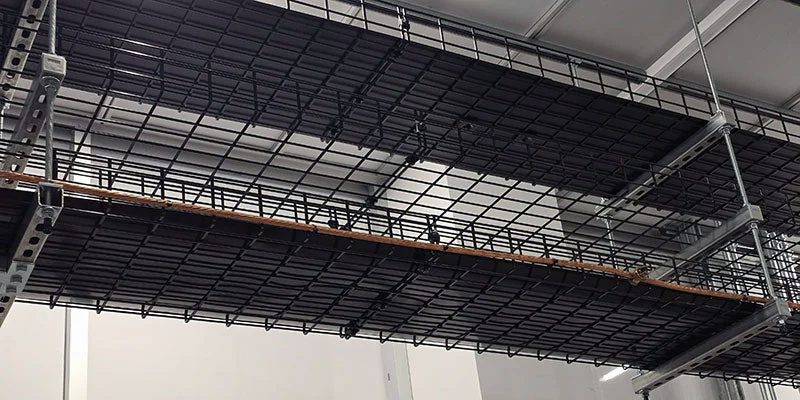
Understanding B Line Cable Tray Weight for Installations
The Applications of Insert Plate for Cable Tray
Insert plate for cable trays are an integral component in modern cable management systems. Their primary function is to enhance the protection, organization, and longevity of cabling infrastructure in a wide range of environments. These plates act as barriers or separators within cable trays, offering both structural support and a higher level of safety. Below are several key sectors where insert plates are widely adopted, along with the specific benefits they bring to each application.
Industrial Facilities
In industrial facilities such as factories, manufacturing plants, and warehouses, cable systems are often exposed to harsh conditions like mechanical stress, chemical exposure, and temperature fluctuations. Insert plates help shield cables from physical damage and corrosive substances while keeping them neatly aligned and separated. This not only prevents tangling and abrasion but also facilitates efficient routing and segregation of power and data lines. By doing so, insert plates reduce maintenance needs, enhance workplace safety, and help operations meet industrial standards and regulations.
Data Centers
In data centers, where cable density is high and performance is mission-critical, insert plates play a key role in organizing complex cable networks. They help reduce airflow obstruction, which supports better cooling efficiency, and minimize electromagnetic interference by maintaining proper separation between different types of cables. Additionally, the clean and organized appearance they support makes cable trays more manageable and compliant with audits or inspections. This improves reliability, uptime, and ease of maintenance in data-heavy environments.
Commercial Buildings
In commercial buildings such as office complexes, retail stores, and educational institutions, insert plates offer a practical solution for both functional and aesthetic needs. They help conceal and secure cables, preventing visual clutter and reducing trip hazards. Insert plates also make it easier to access and modify wiring systems for future upgrades or maintenance, while aiding compliance with building codes and safety standards. This creates a cleaner, safer, and more flexible infrastructure for both occupants and facility managers.
Telecommunications
In the telecommunications sector, where extensive cabling supports critical communication infrastructure, insert plates provide vital protection and organization. They prevent signal degradation by reducing cable interference and ensure cables are properly supported to avoid physical strain or damage. With clearly separated and well-organized cable trays, technicians can perform upgrades and troubleshooting more efficiently, reducing the risk of outages and ensuring high service availability.
Installation and Maintenance of Insert Plate for Cable Tray
The proper installation and ongoing maintenance of insert plates are critical to ensuring the effectiveness and longevity of cable tray systems. While insert plates are relatively simple to install, attention to detail and adherence to best practices can significantly impact their performance over time.
Installation Process
Installing an insert plate for cable tray is typically a quick and efficient process, especially when the correct size and type of plate is selected. Most insert plates are designed to be either slid into position or secured using screws, bolts, or brackets, depending on the tray configuration. The key steps include:
- Measuring the tray opening to determine the correct plate dimensions.
- Selecting the right material and thickness, based on environmental and structural requirements.
- Fitting the plate securely, ensuring it aligns with the cable tray edges and forms a proper seal or coverage.
- Using standard or custom fasteners as needed to ensure stability and safety.
At GangLong Fiberglass, we offer a comprehensive range of insert plates engineered for compatibility with standard cable tray dimensions, as well as custom solutions for specialized installations. Whether it’s a compact office setting or an expansive industrial site, our insert plates are designed for easy integration and reliable performance.
Maintenance Guidelines
Maintaining insert plates is vital to preserving cable protection and minimizing system degradation over time. While the materials used in insert plates—such as fiberglass, plastic, or metal—are durable, regular inspection and cleaning are recommended. Key maintenance practices include:
- Routine cleaning to remove accumulated dust, dirt, or debris that may obstruct ventilation or compromise aesthetics.
- Surface wiping with a damp cloth or non-abrasive cleaner for fiberglass or plastic plates.
- Inspection for corrosion or oxidation in metal insert plates, especially in humid or corrosive environments.
- Checking for physical damage or warping, which may reduce the effectiveness of the seal or coverage.
Proactive maintenance helps ensure that insert plates continue to provide effective protection and maintain the integrity of cable pathways over time.
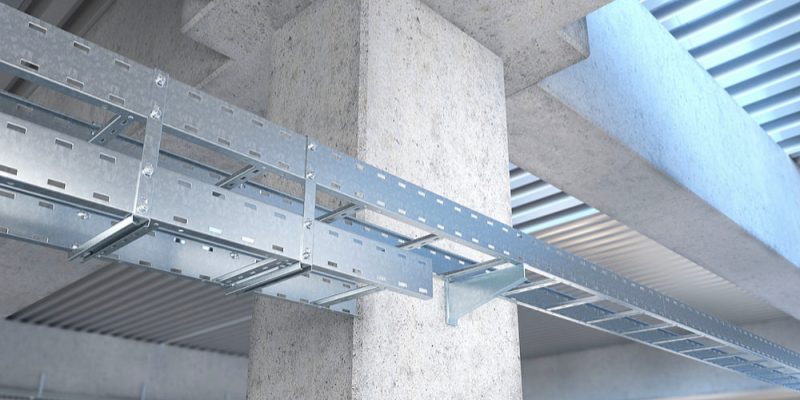
Cable Tray Wall Penetration Sleeve: Essential for Safety
FAQs about Insert Plate for Cable Tray
The fill factor for cable trays refers to the amount of space within a cable tray that is occupied by cables, compared to the total available space in the tray. It is an important concept in cable tray design and installation, as it ensures that the tray is not overloaded, which could potentially affect the performance of the cables or the structural integrity of the tray. Typically, the National Electrical Code (NEC) recommends that cable trays be filled to no more than 50% of their total capacity for power cables, and up to 30% for communication cables. The fill factor helps to prevent cables from becoming overheated due to insufficient airflow and also allows for future cable additions. Adhering to proper fill factor guidelines ensures that the system is safe, compliant with regulations, and able to accommodate any necessary expansion in the future.
The installation requirements for cable tray systems are covered primarily by the National Electrical Code (NEC), specifically under NEC Article 392. This article outlines the standards for the design, installation, and maintenance of cable trays, ensuring they meet safety and operational standards. Some key requirements include the proper selection of materials based on the environment (e.g., indoor vs. outdoor use, corrosive environments), adequate support systems to prevent sagging, and the need for secure, properly spaced fasteners. The code also specifies rules for cable segregation, grounding, and bonding, as well as safety considerations for fire and mechanical hazards. Additionally, manufacturers of cable tray systems often provide installation guidelines that are tailored to their specific products, which should be followed to ensure optimal performance and safety. It is critical to consult both the NEC and manufacturer instructions to ensure that the installation meets all relevant standards.
Installing cable trays involves several safety procedures to protect both the installation team and the integrity of the electrical system. First and foremost, proper personal protective equipment (PPE) should be worn, including hard hats, safety gloves, goggles, and steel-toed boots, depending on the work environment. The installation area should be secured to prevent unauthorized access and to minimize the risk of accidents. It is important to ensure that the power is turned off before working on electrical systems, and to verify that all electrical lines in the area are properly de-energized. When installing cable trays overhead, it is essential to use fall protection equipment, such as harnesses and lanyards. Additionally, workers should use ladders or scaffolding that are in good condition and properly secured. Proper training on the use of tools and installation techniques is crucial to avoid mistakes that could lead to safety hazards. Finally, the completed installation should be thoroughly inspected for stability, grounding, and compliance with safety standards before the system is energized.

As the editor of GangLong Fiberglass, I have years of experience and in-depth research, focusing on cable tray products, fiberglass solutions, and grille systems. I incorporate years of industry insights and practical experience into every content, committed to promoting the progress of the industry. At GangLong Fiberglass, my commitment is reflected in every product, from innovative cable trays to durable fiberglass solutions and sturdy grille systems. As an authoritative voice in the industry, my goal is to provide valuable information to professionals and businesses and promote forward-looking solutions.

